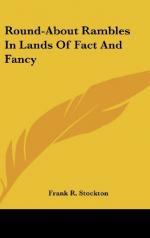But when the father or brother of the Princess wished to ride, especially if it happened to be a time of war, he frequently used a very different vehicle from an easy-going Palanquin.
He sprang into his war-chariot, and his driver lashed the two fiery horses into a gallop, while their master aimed his arrows or hurled his javelin at the foe.
Riding in these chariots was not a very great luxury, especially to those who were not accustomed to that kind of carriage exercise. There were no seats, nor any springs. The riders were obliged to stand up, and take all the bumps that stones and roots chose to give them, and as they generally drove at full speed, these were doubtless many and hard. There was in general no back to these Chariots, and a sudden jerk of the horses would shoot the rider out behind, unless he knew how to avoid such accidents.
We of the present day would be apt to turn up our noses at these ancient conveyances, but there can be no doubt that the Egyptian Princesses and warriors derived just as much pleasure from their Palanquins and rough-going war-chariots as the ladies of to-day find in an easy-rolling barouche, or the gentlemen in a light buggy and a fast horse.
BEAUTIFUL BUGS.
[Illustration]
We are not apt—I am speaking now of mankind in general—to be very fond of bugs. There is a certain prejudice against these little creatures, which is, in very many cases, entirely unwarranted. The fact is that most bugs are harmless, and a great many of them are positively beautiful, if we will but take the trouble to look at them properly, and consider their wonderful forms and colors. To be sure, many insects to which we give the general name of bugs are quite destructive in our orchards and gardens, but, for all that, they are only eating their natural food, and although we may be very glad to get rid of our garden bugs as a body, we can have nothing to say against any particular bug. None of them are more to blame than the robins and other birds, which eat our cherries and whatever else we have that they like, and we never call a robin “horrid” because he destroys our fruit. True, the insects exist in such great numbers that it is absolutely necessary for us to kill as many of them as possible, and it is very fortunate that the robins and black-birds are of so much benefit to us that we are glad to let them live.
But all this should not make us despise the bugs any more than they deserve, particularly as they are just as beautiful as the birds, if we only look at them in the right way. A microscope will reveal beauties in some of the commonest insects, which will positively astonish those who have never before studied bugs as they ought to be studied. The most brilliant colors, the most delicate tracery and lace-work over the wings and bodies; often the most graceful forms and beautifully-contrived limbs and bodies and wing-cases and antennae, are to be seen in many bugs when they are placed beneath the glasses of the microscope.




